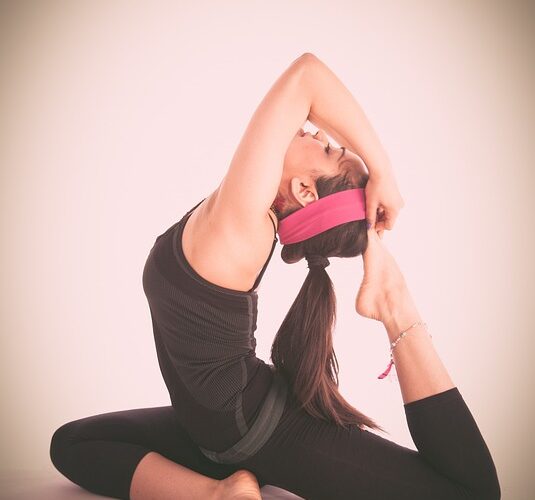Understanding Sprains and Strains in HIIT Workouts
High-Intensity Interval Training (HIIT) has garnered immense popularity due to its efficiency in burning calories and improving cardiovascular fitness in a short timeframe. However, as with any vigorous exercise regimen, the risk of injuries, particularly sprains and strains, can be a daunting challenge for practitioners. Understanding the nature of these injuries is the first step toward effective prevention.
Sprains are injuries to ligaments, the tough bands of tissue connecting bones at a joint. They often occur when a joint is forced into an unnatural position. For example, landing awkwardly during a jump can lead to a sprained ankle. On the other hand, strains affect muscles or tendons, which connect muscles to bones. They typically result from overstretching or overusing a muscle—like pulling a muscle during rapid movements inherent in HIIT routines.
Understanding the commonality and causes of sprains and strains can help individuals forewarn themselves about potential risks and make informed choices during their training sessions.
Common Causes of Injuries in HIIT Training
Identifying the factors that contribute to sprains and strains is crucial for injury prevention in HIIT workouts. Here are some of the most prevalent causes:
-
Improper Warm-Up: A common pitfall is neglecting proper warm-up routines. Failing to prepare the muscles and joints can lead to overexertion. Blood circulation increases, ligaments, and muscles must be sufficiently warm to handle the intense movements that characterize HIIT.
-
Poor Technique and Form: Maintaining proper form is essential, yet many participants sacrifice technique for speed or intensity. Overlooking the fundamentals can place undue stress on particular joints or muscle groups, leading to injuries. For example, during box jumps, improper landing can affect ankle stability.
-
Inadequate Rest and Recovery: HIIT is designed to push the body, but recovery is equally essential. Inadequate rest between sessions can lead to fatigue, increasing the likelihood of muscle strains. Muscles need time to repair, especially after intensive workouts.
-
Overtraining: Some individuals may be tempted to push their limits too far, training beyond their physical limits. This leads to cumulative trauma, causing injuries over time. A systematic approach, recognizing one’s limits, is vital.
- Improper Footwear and Equipment: Wearing inappropriate footwear may compromise support and stability. Shoes that do not provide adequate cushioning and traction can exacerbate the risk of foot sprains and strains. Likewise, using faulty equipment can lead to injuries during high-energy movements.
Effective Warm-Up Strategies for HIIT
A well-structured warm-up can significantly reduce the likelihood of sport-related injuries, especially when engaging in HIIT workouts. Here are some effective strategies:
-
Dynamic Stretching: Unlike static stretching, which lengthens muscles while stationary, dynamic stretching involves movements that take muscles and joints through their full range of motion. Examples include arm circles, leg swings, and walking lunges. This not only elevates heart rate but also prepares connective tissues for immediate activity.
-
Gradual Increase in Activity: Gradually increasing the intensity of your workout aids in muscle readiness. Start with low-intensity workouts, progressing to moderate before hitting your HIIT intervals. This ensures your body transitions smoothly into more intense efforts.
-
Targeting Key Muscle Groups: Focus on muscle groups that you will heavily engage during HIIT. If you’re planning on doing a lot of squats or lunges, warm up your quads, hamstrings, and glutes specifically to enhance muscle readiness during intense activity.
-
Mobility Drills: Incorporating mobility exercises helps improve joint lubrication, leading to better movement efficiency. Using exercises such as hip openers can reduce the risk of injuries by enhancing flexibility and range of motion.
- Mental Preparation: Don’t underestimate psychological preparation. Focusing on breath control and mindset helps put you in the right frame of mind before high-intensity efforts, reducing anxiety and boosting performance.
Techniques for Maintaining Proper Form
The importance of form cannot be overstated in HIIT workouts. Here are techniques to aid in maintaining proper form:
-
Mindful Movements: Focus on being present during each exercise. Isolate your movements in your mind, ensuring every rep is completed thoughtfully. This awareness will lessen the risk of hasty, improper motions.
-
Use Mirrors or Video: Consider setting up mirrors or recording your workouts to scrutinize your form. Self-assessment can reveal areas needing improvement, enabling you to adjust as needed.
-
Engaging a Trainer: If possible, consider working with a qualified fitness trainer. Their expert eye can provide immediate feedback and correct any deviations or pitfalls in your form.
-
Using Guided Workouts: Online platforms and fitness apps often provide guided HIIT workouts. These resources are beneficial for observing recommended forms and methods, allowing for fluid use of techniques in real time.
- Regular Feedback: Engage friends or fellow workout partners to provide feedback on your form. Having an external perspective can help identify potential issues you might overlook.
Recovery Techniques to Prevent Future Injuries
Recovery plays an essential role in injury prevention, especially after HIIT workouts. Here are various techniques to enhance recovery:
-
Active Recovery: Incorporate low-intensity activities such as walking, walking, or gentle yoga between HIIT sessions. These help maintain blood circulation, easing muscle soreness without placing additional stress on them.
-
Proper Nutrition: Eating a balanced post-workout meal rich in protein and carbohydrates aids muscle recovery. Protein helps repair muscles while carbohydrates replenish lost energy.
-
Hydration: Staying adequately hydrated supports muscle function and recovery. Dehydration can lead to muscle fatigue, increasing the likelihood of strains.
-
Foam Rolling: Engage in self-myofascial release through foam rolling to ease muscle tightness. Targeting areas such as the quadriceps, hamstrings, and glutes can reduce soreness and improve mobility.
- Rest and Sleep: Ensure you get sufficient sleep, as it is critical for muscle recovery. Aim for 7-9 hours of quality sleep, which supports hormonal balance necessary for muscle repair and growth.
By incorporating these insights and strategies, fitness enthusiasts can foster a safer environment while maximizing the benefits of their HIIT workouts. Understanding injury risks and making the necessary adjustments in training can lead to a more robust fitness journey.
Identifying Warning Signs of Injuries in HIIT Workouts
Being attuned to your body during HIIT workouts can help you recognize early warning signs of injuries. Symptoms such as persistent pain, swelling, or limited range of motion are red flags. Ignoring these signals may lead to more severe injuries. It is crucial to differentiate between normal discomfort following a workout and pain indicating potential injury. Monitoring your body’s responses and consulting a healthcare professional when needed can prevent the exacerbation of injuries and facilitate timely interventions.
Adapting HIIT for Different Fitness Levels
HIIT workouts can be tailored to accommodate various fitness levels, allowing individuals to participate safely. Beginners might start with shorter intervals and longer rest periods, gradually ramping up intensity and duration as their fitness improves. Intermediate participants can focus on refining technique while increasing cardiovascular load. Advanced individuals should maintain vigilance regarding form and recovery to avoid injuries while challenging their limits. Personalized adaptations make HIIT accessible and decrease the risk of injuries across diverse fitness levels.
The Role of Flexibility in Injury Prevention
Flexibility significantly influences injury risk during strenuous exercises like HIIT. Improved flexibility enhances the range of motion in joints, making it easier to move effectively and reducing the chance of strains or sprains. Regular stretching, including static and dynamic forms, can considerably increase flexibility and improve overall performance. Integrating flexibility exercises into warm-ups and cooldowns can be invaluable; yoga is another excellent way to enhance flexibility, balance, and strength, thus contributing to better injury prevention in HIIT training.
The Importance of Cross-Training for Injury Prevention
Cross-training involves incorporating different workout styles into your routine, allowing various muscle groups to be used and providing varying movements that help to avoid overuse injuries. For HIIT practitioners, integrating low-impact workouts like swimming, cycling, or strength training can alleviate stress on the joints while enhancing cardiovascular fitness. Cross-training not only aids in muscle recovery but improves overall athletic performance by promoting balanced muscular development and preventing associated injuries that stem from repetitive training patterns.
Incorporating Mindfulness into HIIT Training
Mindfulness, the practice of maintaining a moment-by-moment awareness of thoughts and feelings, can be particularly effective in HIIT workouts. By cultivating mindfulness, individuals can enhance their focus on form, listen to their bodies, and recognize when fatigue sets in. This awareness leads to better movement quality, reducing the risk of injury. Techniques such as breath control and visualization can improve mental clarity, enabling participants to remain present and engaged during workouts. By fostering mindfulness, practitioners can enhance performance while also prioritizing safety.
Summary:
Injuries such as sprains and strains in HIIT workouts can significantly hinder fitness progress. Understanding the risks and employing effective strategies for injury prevention is critical for enthusiasts of all fitness levels. This includes recognizing warning signs of injuries, adapting workouts according to individual fitness levels, and enhancing flexibility through stretching exercises. Cross-training and mindfulness practices can strengthen an individual’s overall fitness while reducing the likelihood of injuries. As practitioners remain educated about their bodies and workout techniques, they can create a safer training environment that fosters positive fitness journeys.
By prioritizing injury prevention strategies, HIIT enthusiasts can enjoy the benefits of high-intensity workouts without compromising their safety and longevity in fitness.
#Injury #Risk #Avoiding #Common #Sprains #Strains #HIIT #Workouts
















